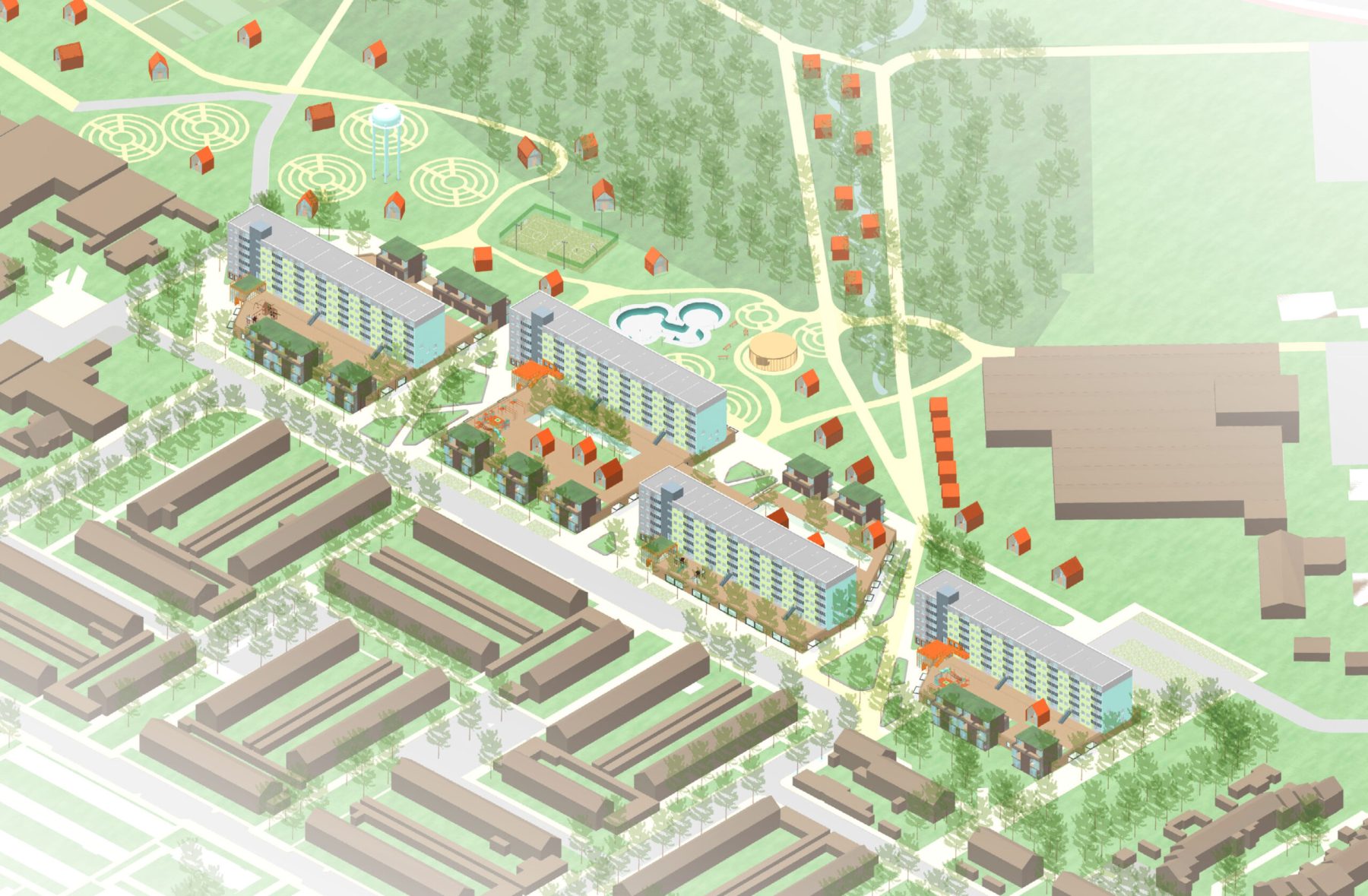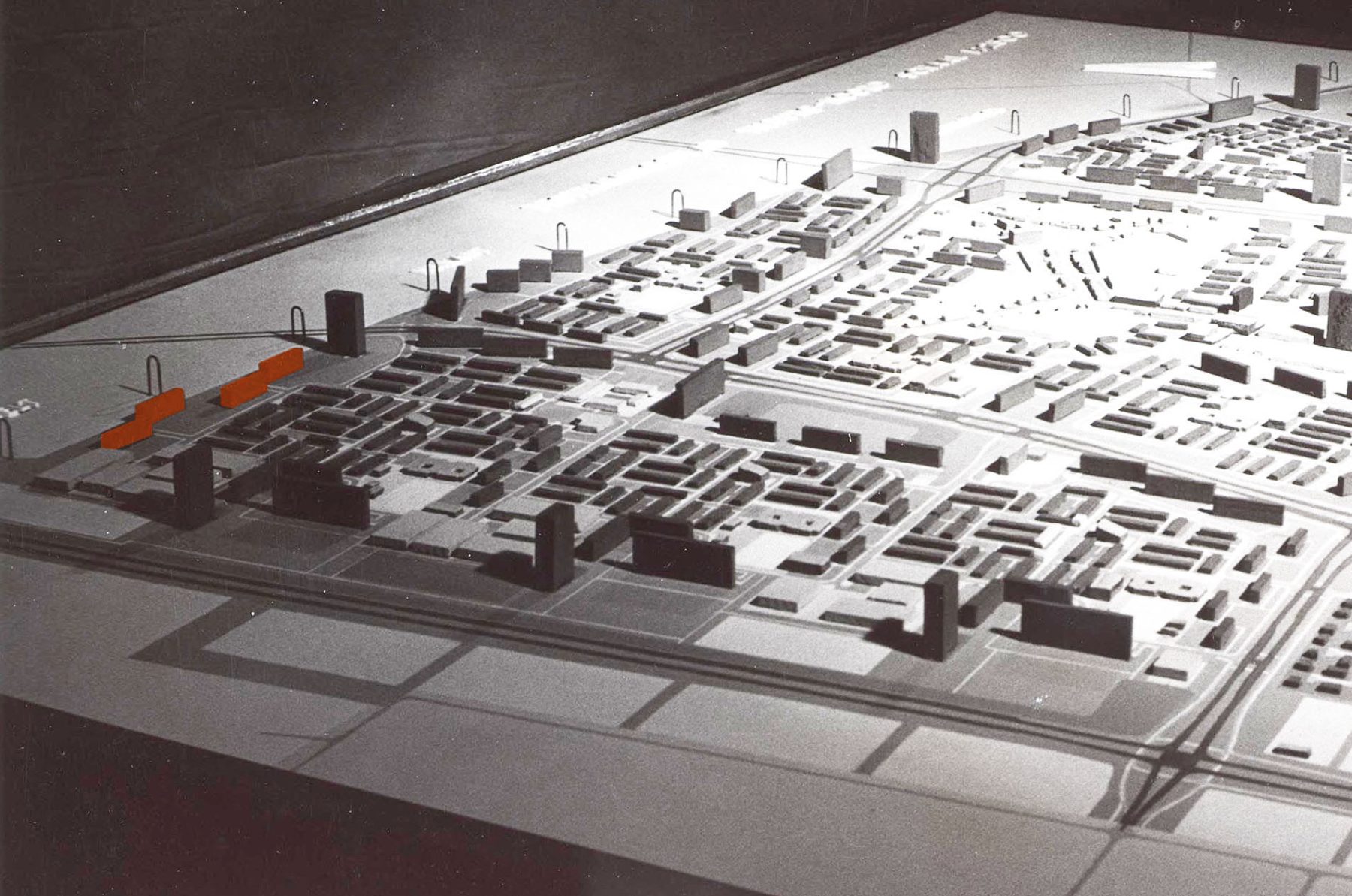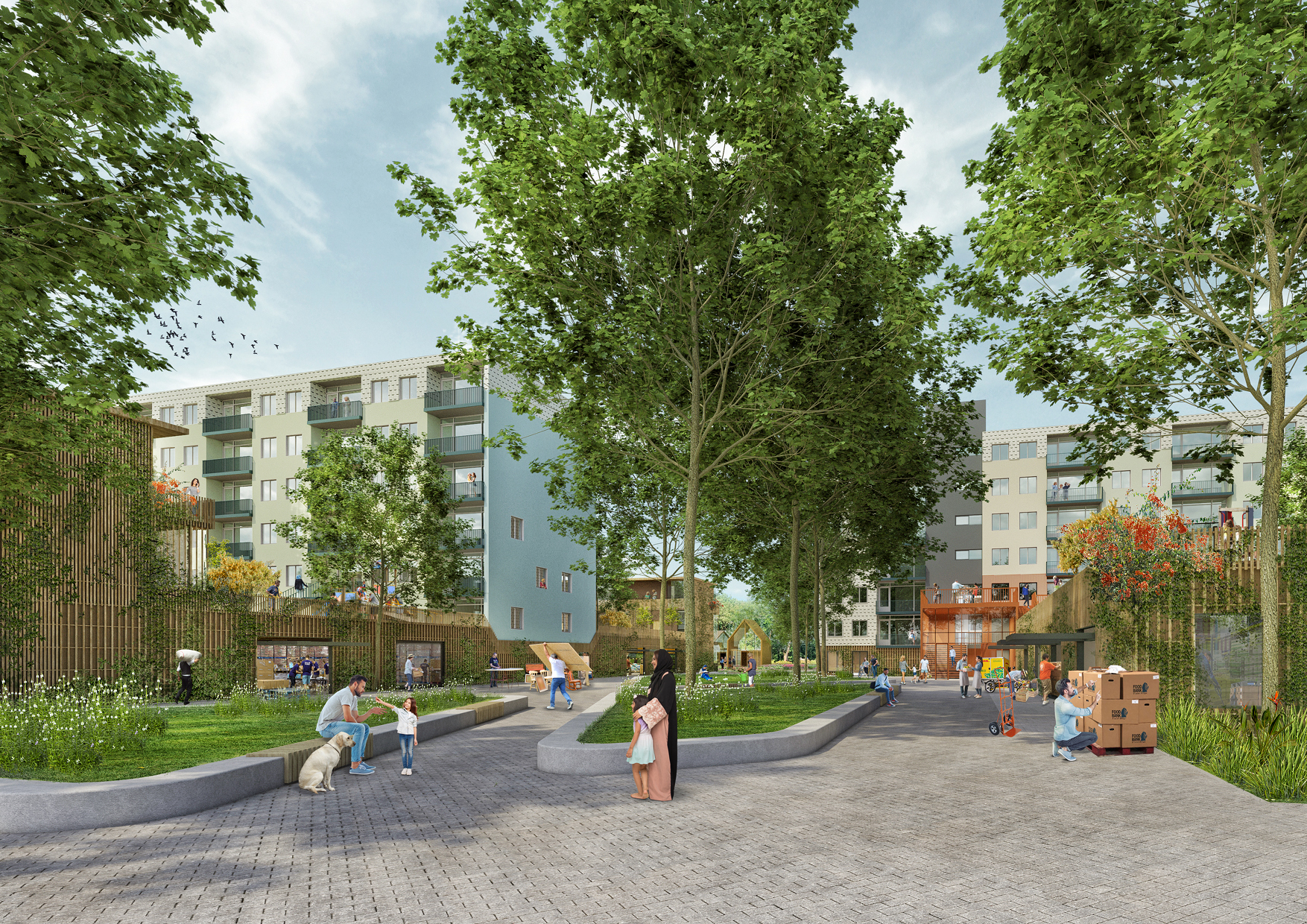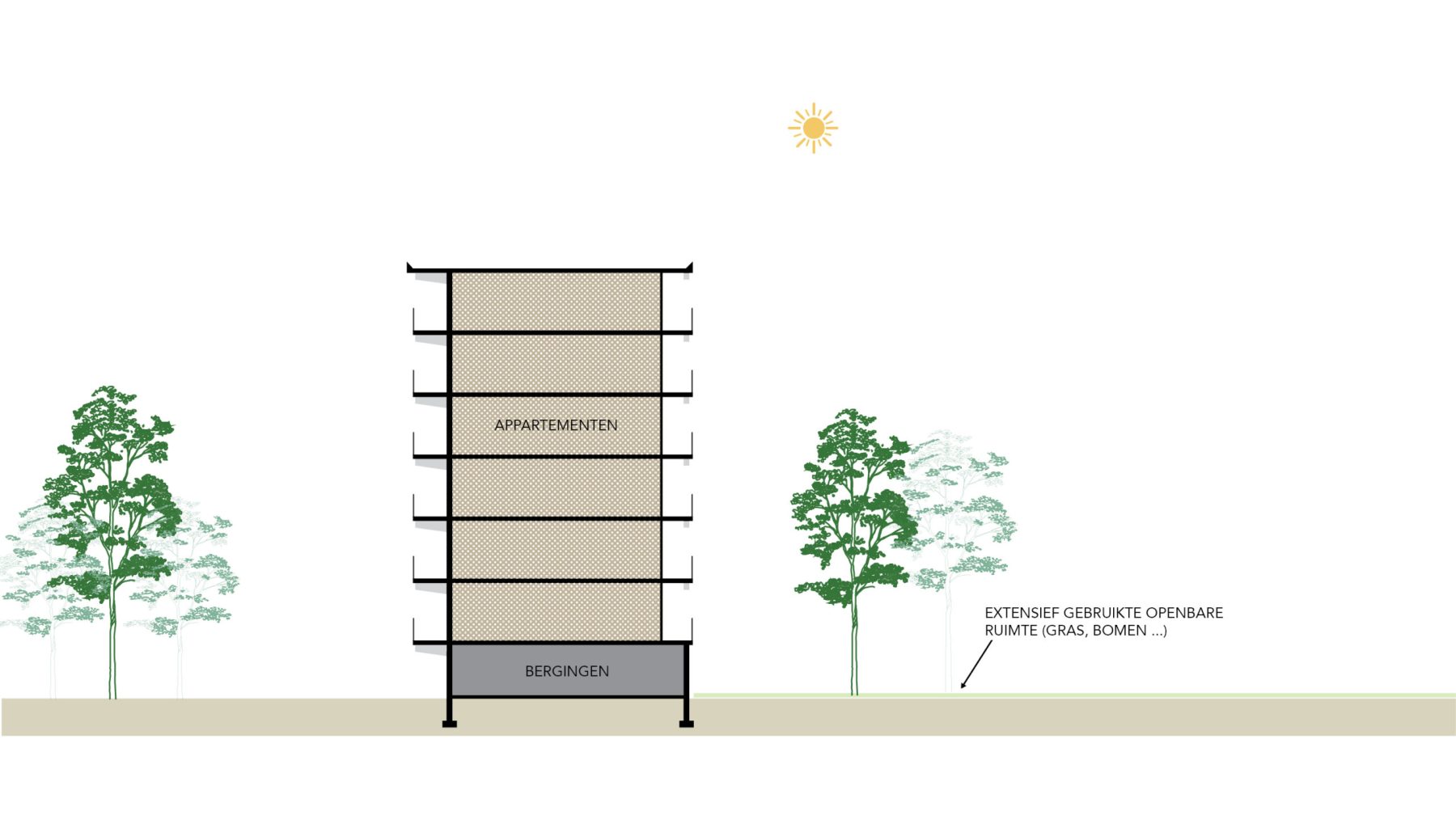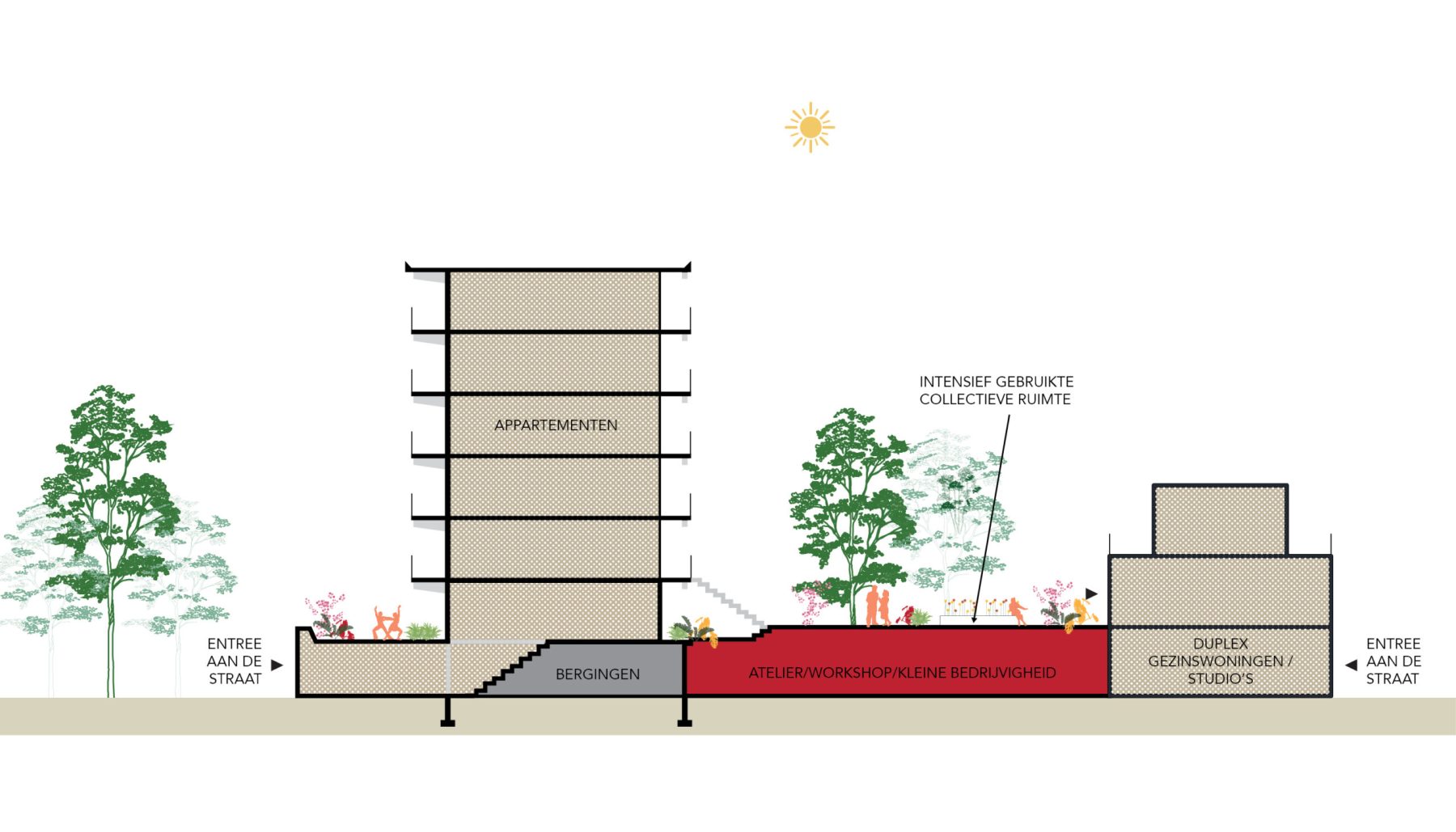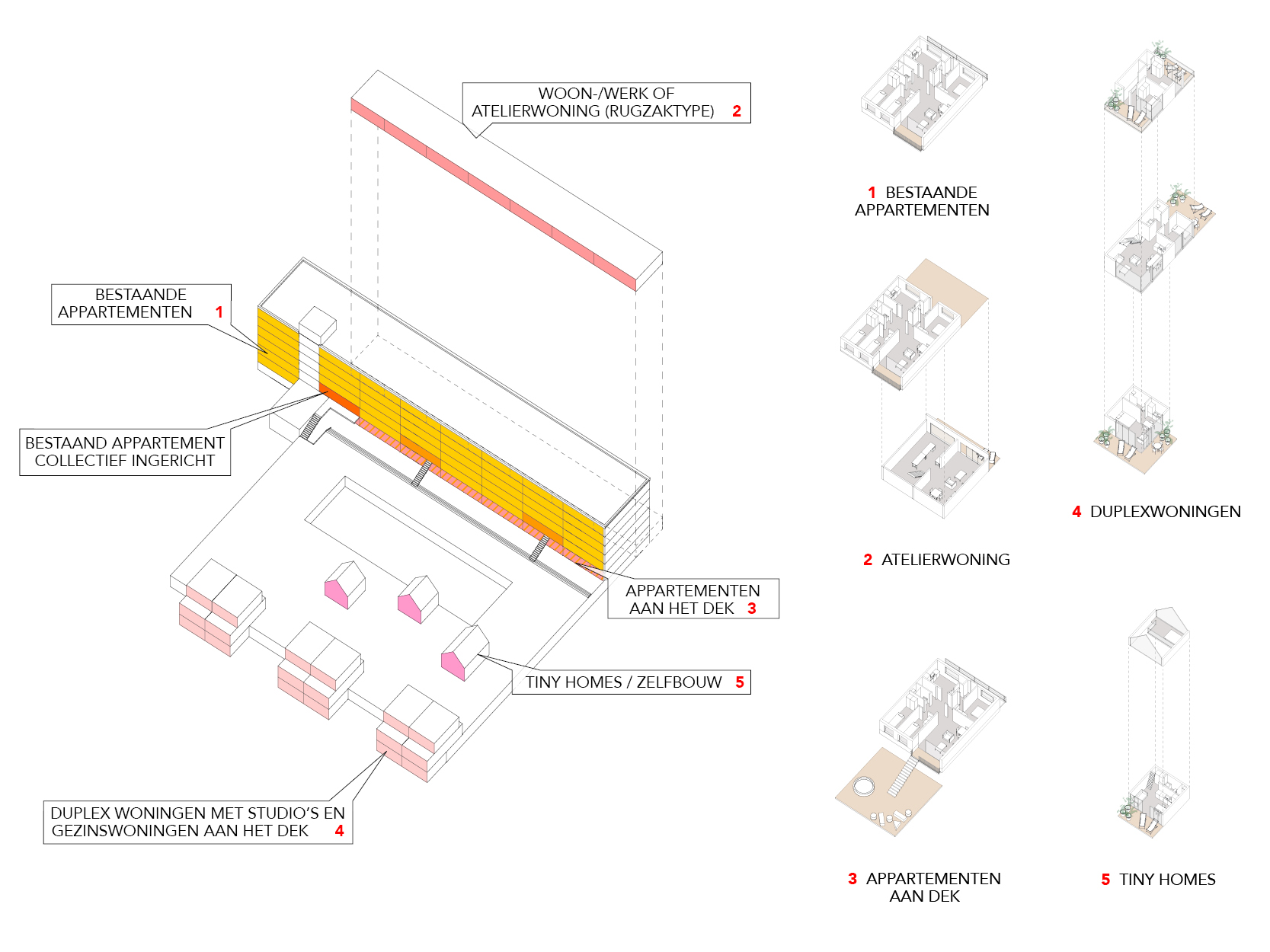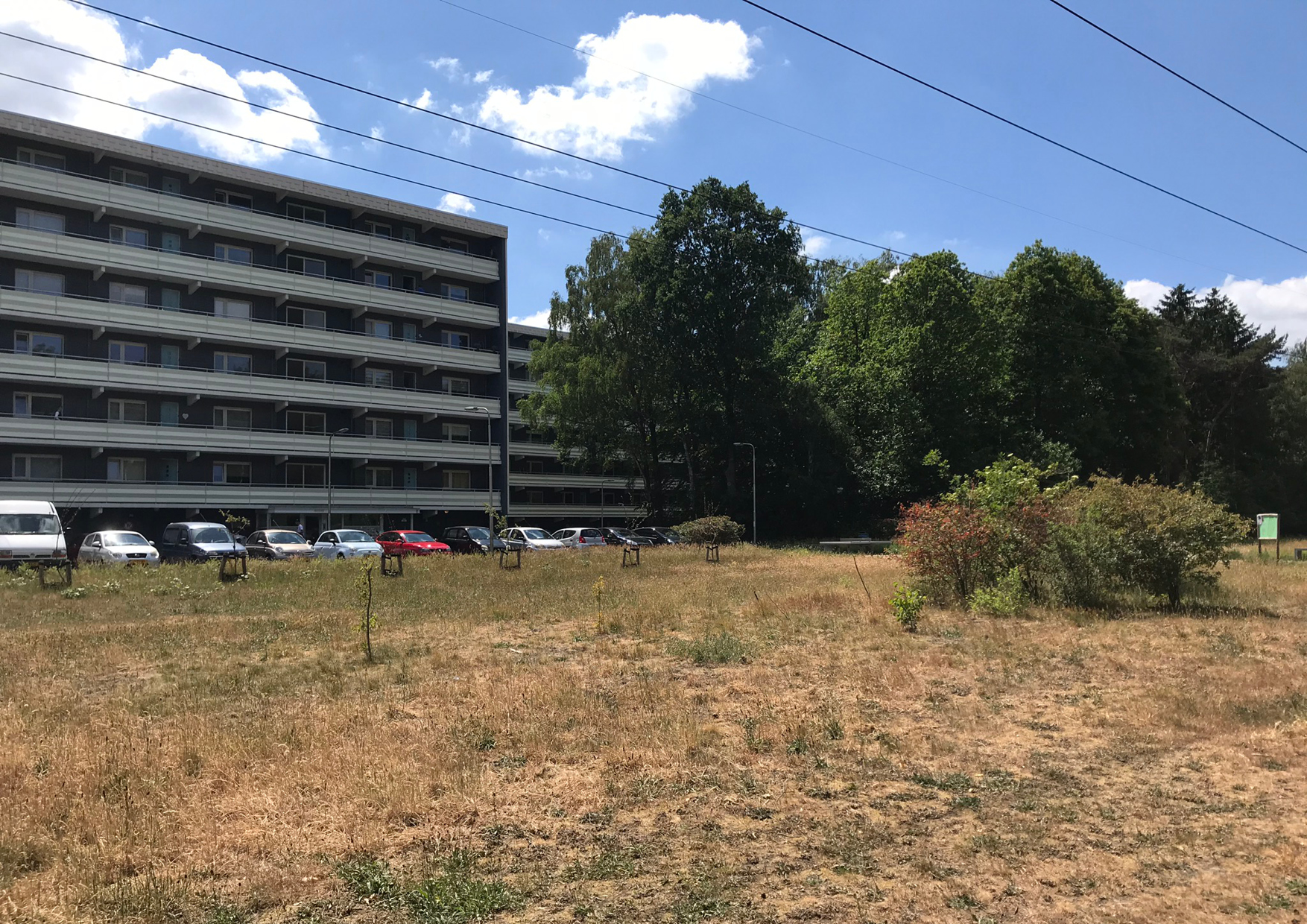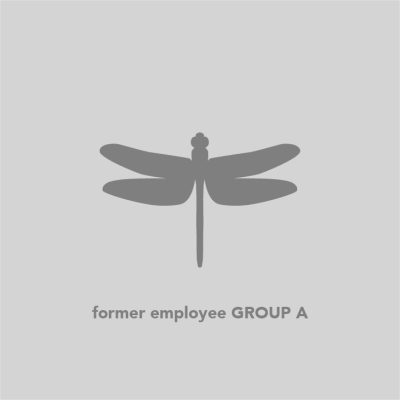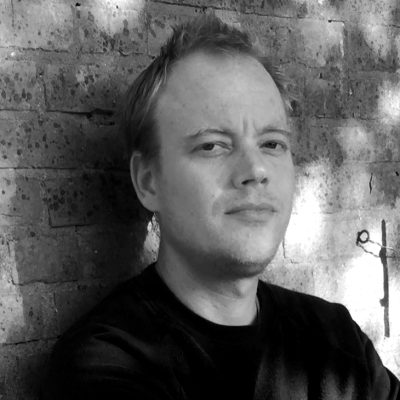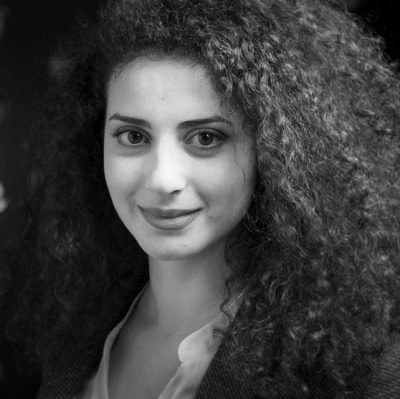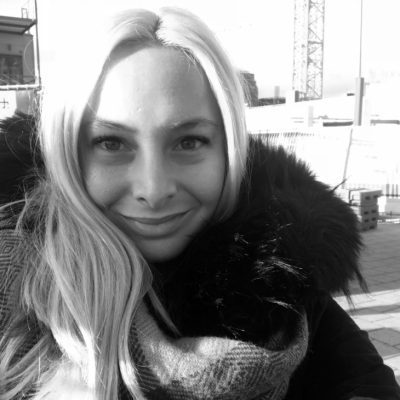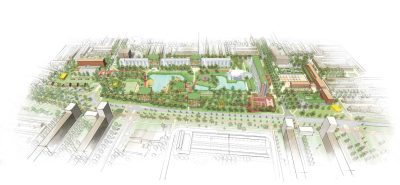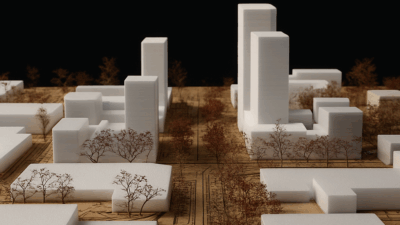Commissioned by the municipality of Tilburg and housing corporation WonenBreburg, GROUP A is investigating the transformation of four gallery flats and the immediate surroundings in Tilburg-Noord. The spearheads of the design are strengthening the local economy, increasing social safety, promoting demographic diversity through a varied range of housing types and supporting individual initiative by empowering people.
Structural change
The flats on Kapelmeesterlaan were built in the 1970s. They are gallery flats with three-room apartments spread over six floors, on top of a rather closed basement floor containing storage rooms and parking boxes. The houses are spacious, the view of the greenery on the north side is beautiful. But there are a number of persistent social problems and the rigid layout of the original design impedes structural change.
Cycle of improvement
The client wishes to empower certain groups, such as single mothers and starting entrepreneurs. For involvement of these groups to succeed, the collective use of the public space and its surroundings needs to be looked at. The idea is that, in order to achieve comprehensive long-term results, physical and social interventions will go hand in hand. We aim to create a virtuous cycle of improvement, not only at the level of the flats, but at the level of the entire district.
Multi-layered approach
The design aims to strengthen collectivity and visibility on multiple levels. New studio and workshop spaces adjoin small public squares between the flats, so that visibility and social control increase. In order to do this, the streets are being redesigned, parking spaces are given a less prominent position. New communal entrances to the flats are light and inviting places, with great overview, where residents can meet each other. On the lower floors, houses will have semi-collective roof gardens with a view on the street and plenty of room for young children to play, and verandas directly adjacent to the street or the park. Per flat, one collective apartment will be created where people can cook and eat together. Additionaly, new housing is being added. It concerns housing types that are not currently available: tiny homes, small apartments for starters and family homes with multiple floors.
Programmatic Intensification
The green belt and forest to the north of the flats are an integral part of the vision. Here too, we propose a programmatic intensification. Alongside play areas for children, there is room for an outdoor pool, a neighborhood pavilion and places for people to grow food. Storage ponds and rainwater connections that are necessary to connect the city of Tilburg with the Pauwels landscape park offer opportunities for adventurous play areas. Active farmers from the area can bring their produce here, to sell or sort it, supported by enthusiastic local residents. Additional slow traffic connections help to transform Kapelmeesterlaan from a position on the very edge of the city into the center of a vibrant area.
Facts
Client
Gemeente Tilburg and WonenBreburg
Assignment
Sketch design, vision
Location
Tilburg North
Area
Approx. 14,000 sqm
Function
Residential, workspace, public
Start design
2020
